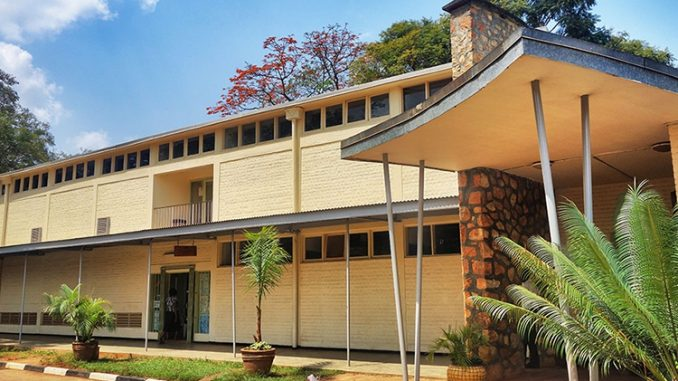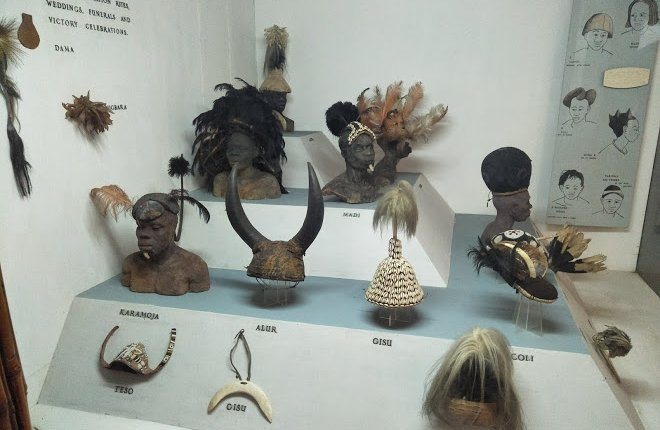Napak open-air museum to boost tourism
The Napak open-air museum project in Uganda aims to boost tourism in the Karamoja sub-region by showcasing remarkable fossils, including lower Miocene rodent dental remains and a 20-million-year-old giant anthracothere femur bone. To visit Uganda, you will need a Ugandan visa.

The project, with an estimated investment of 5 billion Shillings, not only highlights these discoveries but also supports local involvement, job creation, and tourism education. It emphasises fields like palaeontology and archaeology, elevating cultural and scientific heritage and solidifying Napak's UNESCO-recognized status as a geological treasure.
The Ministry of Tourism in Uganda's Ambitious Project in Napak District
The Ministry of Tourism in Uganda is creating an open-air museum in Napak district, specifically in Iriiri Sub County. The main objective is to display fossils and attract more tourists to the Karamoja sub-region. This museum will serve as a focal point for showcasing remarkable discoveries and encouraging visitors to explore the wider Karamoja area.
- Unearthing Ancient Treasures
The decision to create this museum comes after the discovery of important fossils in the area, such as lower Miocene rodent dental remains and a femur bone from a giant anthracothere dating back around 20 million years. The project is estimated to cost about 5 billion Shillings, and procurement is underway.
- A Multidisciplinary Approach to Conservation
The acting Assistant Commissioner of Museums and Monuments, highlights that the museum will cover palaeontology, archaeology, and related areas. The main goals are to involve locals in fossil preservation, generate job opportunities, and inspire young people to pursue careers in tourism-related fields.

- Local Commitment and Economic Empowerment
The Napak Resident District Commissioner, has committed to providing land for the museum project and sees it as a way to boost economic empowerment in the region. He emphasises the importance of preserving fossil sites to attract tourists, create local jobs, and support scientific research.
- Promoting Tourism, Culture, and Youth Employment
The Napak District Tourism Officer, highlighted the museum's potential to create jobs, particularly for the youth, promote cultural pride, and attract resources for tourist attractions. The initiative is also expected to mitigate cattle raids by involving young individuals as local guides.
- Revealing Ancient Landscapes
Sarah Musalizi, the Principal Conservator of Museums and Monuments, reveals that the discovered fossils suggest the existence of ancient rivers and woodlands in the area. The creation of the open-air museum aims to enhance scientific knowledge and elevate Napak district's status as one of the first 100 geological sites globally, a designation granted by UNESCO in 2022.
Transformative Benefits on Regional Tourism
The Napak open-air museum, spotlighting exceptional fossils, promises to attract palaeontology enthusiasts, elevate tourism, encourage cultural exchange, and empower the local community.
- Tourism Enrichment Through Fossils
The Napak open-air museum, featuring remarkable fossils, is set to transform tourism and culture in the region. It will attract tourists interested in palaeontology and natural history, boosting the local tourism industry and facilitating cultural exchange with the unique heritage of the Karamoja sub-region.
- Cultural Preservation and Promotion
In addition to fossils, the museum prioritises preserving and promoting local culture. Exhibits and interactions with the community, it provide a valuable opportunity to celebrate and safeguard the rich traditions, stories, and artistic expressions of the Karamojong people. This cultivates cultural pride among the local population and ensures the lasting legacy of their heritage.
- Youth Empowerment and Career Opportunities
The Napak open-air museum is a key source of employment, particularly for local youth. Beyond financial stability, these opportunities empower and inspire young individuals to pursue careers in tourism, conservation, and related fields. The museum plays a crucial role in shaping the future workforce of the region.
- Mitigating Social Issues and Ensuring Community Safety
The museum, by employing local youth as guides and providing alternative livelihoods, helps address social issues like cattle raids. It offers legitimate income and purpose, redirecting young individuals away from illegal activities, thereby enhancing community safety and stability.
FAQS
What is the purpose of the Napak open-air museum project?
The purpose of the Napak open-air museum project is to boost tourism in the Karamoja sub-region of Uganda by showcasing fossils and other significant discoveries. It aims to create a one-stop centre for exhibiting fossils, attracting tourists, and promoting scientific and cultural heritage.
What fossils have been discovered in Napak district that led to this project?
Several dental remains of lower Miocene rodents and a femur bone fossil of a giant anthracothere, believed to have existed around 20 million years ago, were discovered in Napak district. These findings played a significant role in initiating the open-air museum project.
How much is the estimated cost of the Napak open-air museum project?
The estimated cost of the Napak open-air museum project is approximately 5 billion Shillings.
What is the focus of the museum in terms of its exhibits and fields of study?
The museum will encompass palaeontology, archaeology, and related fields. It will primarily focus on exhibiting fossils, encouraging local involvement in preserving them, and promoting tourism-related education and careers.
How is the local community involved in this project?
The local community is involved in several ways, including providing land for the museum, serving as guides for tourists, and benefiting from job opportunities created by the museum. The project aims to empower the local community economically.
How will the Napak open-air museum impact tourism and culture in the region?
The museum is expected to boost tourism by attracting visitors interested in fossils and cultural heritage. It will also promote cultural pride, create jobs, and reduce issues like cattle raids by engaging local youth as guides.
What recognition has Napak district received for its geological significance?
Napak district was recognized by the United Nations Educational, Scientific and Cultural Organization (UNESCO) in 2022 as one of the first 100 geological sites in the world. This recognition underscores the area's geological and scientific importance, which the museum project aims to highlight and preserve.
Applying for Uganda e-Visas
- Step 1: Complete the online application form by providing your personal details and passport information.
- Step 2: Proceed to securely make your payment online using a credit card.
- Step 3: Check your email for the confirmation of payment and receipt of your Uganda e-Visa, which will be sent electronically.

